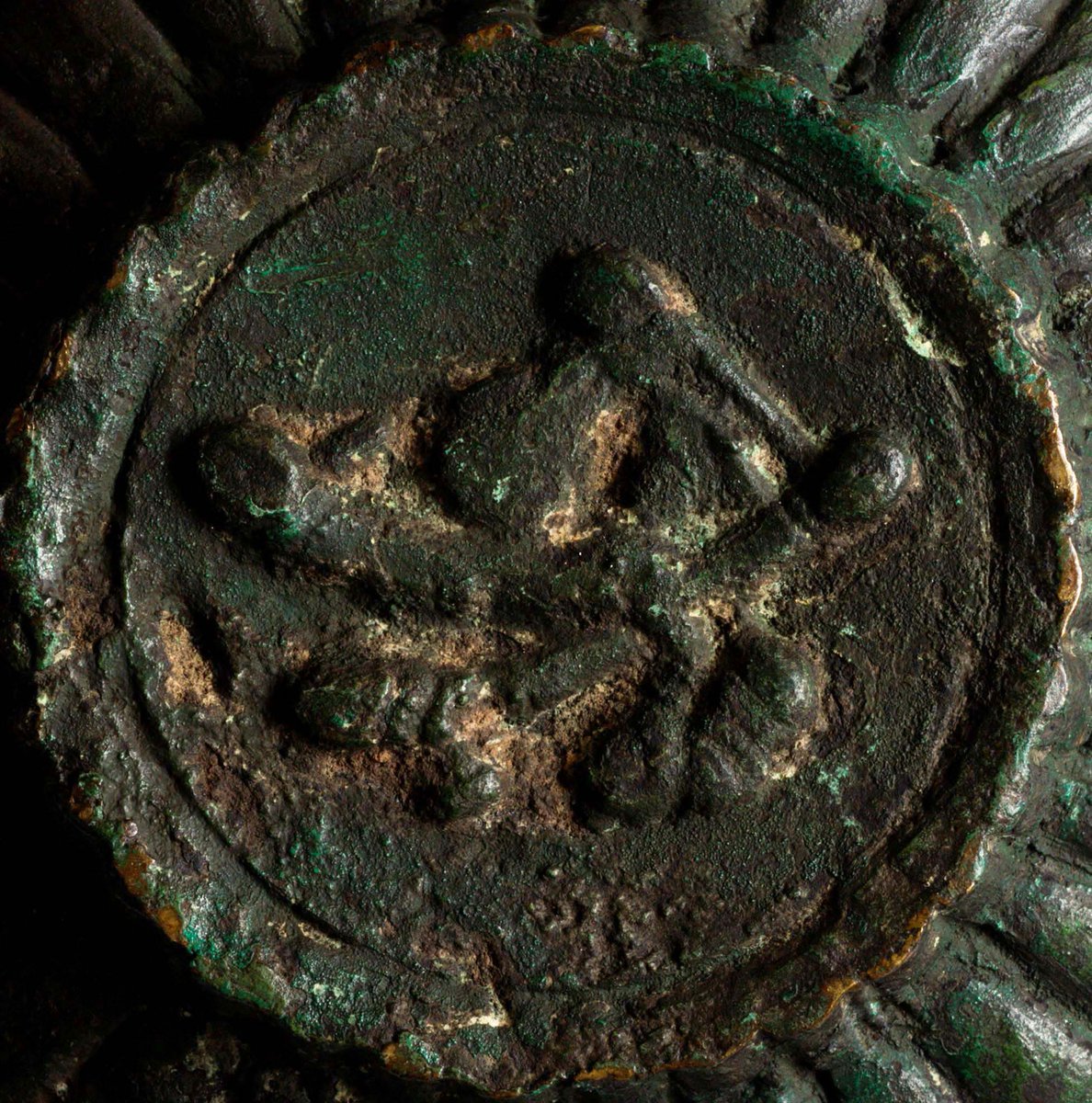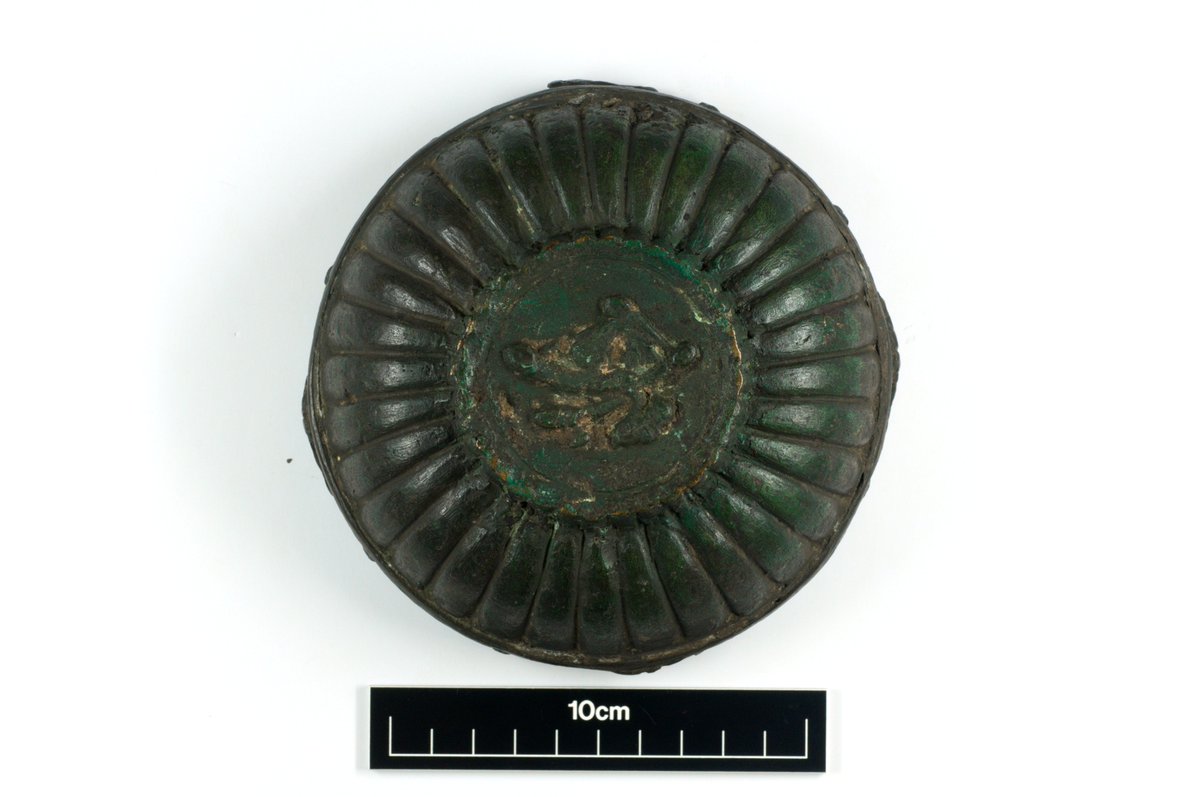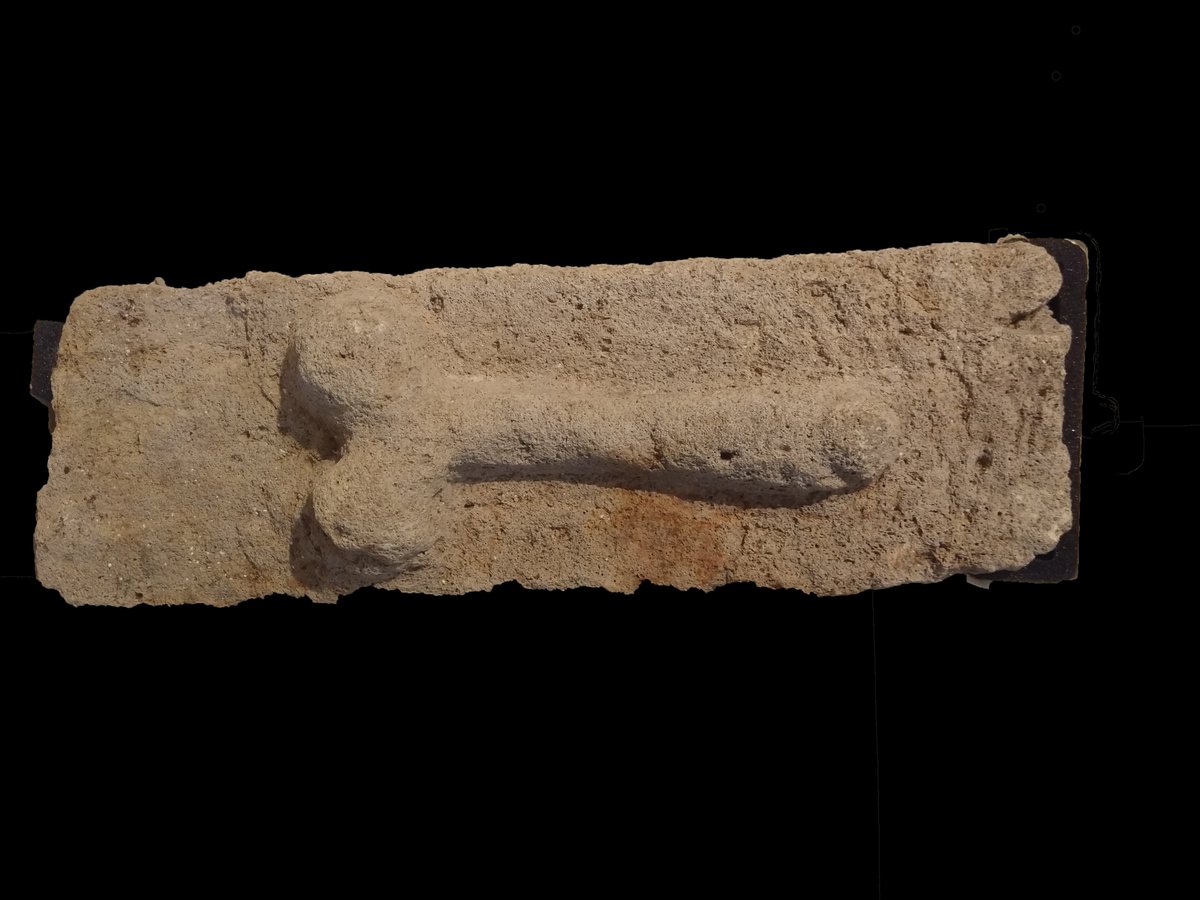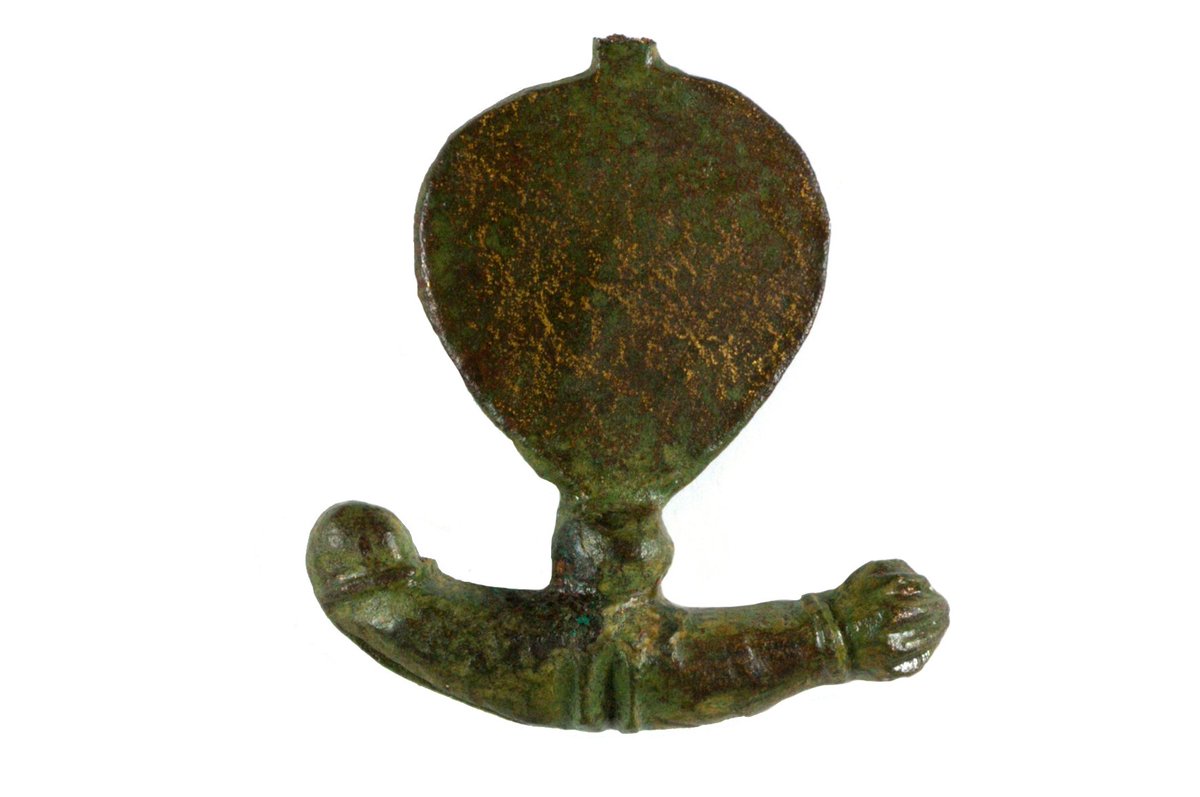
IT’S TIME FOR #CURATORBATTLE!💥
Today’s theme is #SauciestObject for #Valentines!❤️
We're starting with a parade of private parts!
This Roman bowl bears 4 double-ended phalluses, each facing a disembodied vulva. There's even a phallic creature on the bottom too...
BEAT THAT💥
Today’s theme is #SauciestObject for #Valentines!❤️
We're starting with a parade of private parts!
This Roman bowl bears 4 double-ended phalluses, each facing a disembodied vulva. There's even a phallic creature on the bottom too...
BEAT THAT💥

The quirky scene on the base shows a figure riding a lion-like beast which has three phalluses, including one for a head and a tail! Although you’d be forgiven for thinking we were making this stuff up... 

Whilst the artist gets full marks for imagination, the image is really low quality and might be a poorly cast copy of a scene from elsewhere in the Roman World. In fact the bowl is so wacky that our best guess is that it’s a Roman bowl with later additions to make it extra #saucy 

Rather than seeing it as saucy, Romans saw the phallus as a symbol of protection that deflected bad luck & the gaze of the evil eye. Phalluses can be found on many objects and buildings in the Roman world - like this carving, probably built into the wall of York’s Roman fortress 

Lady parts aren't as common, but are sometimes represented as a fist making a cheeky gesture (manus fica) like on this pendant!
The mid-pint in between the fist-and-phallus decoration is highlighted by a groove & 2 raised strips - possibly a vulva #SauciestObject #CuratorBattle
The mid-pint in between the fist-and-phallus decoration is highlighted by a groove & 2 raised strips - possibly a vulva #SauciestObject #CuratorBattle

• • •
Missing some Tweet in this thread? You can try to
force a refresh


